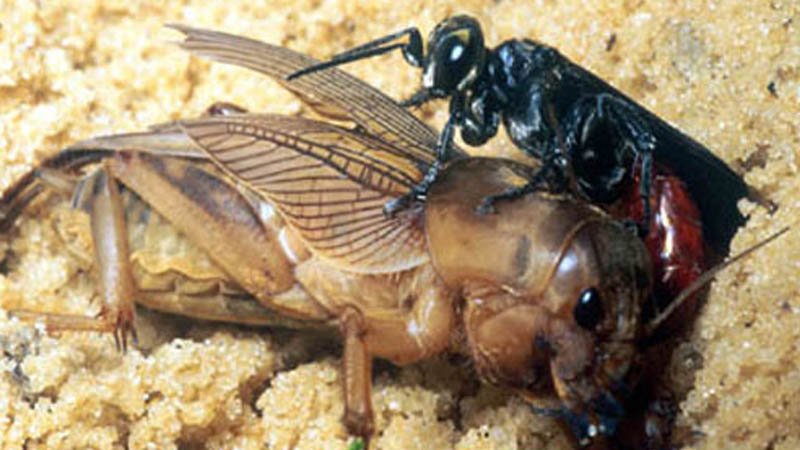
For the better part of a generation, entomologists have been trying to convince golf course superintendents why they should plant wildflowers on golf courses. The typical selling point has been to provide habitat for beneficial insects, such as bees and butterflies.
University of Florida entomologist Adam Dale, Ph.D., has a new hook to convince superintendents why it is important to manage natural areas on golf courses with the right mix of plants.
Dale is promoting a program of diverse native plants that attracts not only honeybees and monarch butterflies, but also predatory insects that can assist in organic pest control.
Through the years, Dale has consulted with one of the experts in the field of establishing natural areas to attract beneficial insects.
"I've had a lot of discussions with (University of Kentucky entomologist) Dan Potter, and I know what he's done in the past. My research focuses on managing insects in urban landscapes and turf systems," Dale said. "Golf courses are good avenues for conservation and biological pest control. This is a great opportunity for golf courses to conserve wildlife, conserve inputs and reduce pests."
A program of at least nine wildflower species that bloom throughout the year attracted a variety of pollinators as well as predators of various turf pests. The program was implemented throughout 2017 at three golf courses in north-central Florida - University of Florida Mark Bostick Golf Course in Gainesville, Top of the World in Ocala and Adena Golf Club in Ocala, which closed abruptly in mid-2018.
"We planted specific wildflowers to attract wasps and other parasitic insects," Dale said.
The takeaway is that a high diversity wildflower mix of nine species or more maximizes predation because there is something always flowering and providing a continuous source of pollen and nectar.
The most abundant predator found throughout the study was a parasitic wasp called the red and black mason wasp, which is a predator of caterpillars, Dale said.
The female wasp stings and paralyzes the armyworm, carries it to its nest then lays and attaches an egg to its prey. When the next generation of wasp hatches it feeds on its host.
When fall armyworms were released on fairways, the study showed that predation increased by 50 percent.
The study measured the effects of a program that included a mix of nine wildflower species and one with just five wildflower species. One included a mix of Canada toadflax, lanceleaf coreopsis, goldenmade tickseed, Indian blanket, spotted beebalm, blue mistflower, shrubby false buttonweed, slender blazing star and wand goldenrod, the other just five wildflower species.
The nine-flower program outperformed the five-flower program, Dale said because it provided habitat for predators throughout the year.
"We wanted to learn if a diversity of flowering plants in the mix affect the attraction of insects and is there a translation to the level of pest control," Dale said. "The takeaway is that a high diversity wildflower mix of nine species or more maximizes predation because there is something always flowering and providing a continuous source of pollen and nectar."
The wildflowers also attracted other predatory wasps, including larra bicolor, which parasitizes mole crickets, and scoliid and tiphiid species that parasitize white grubs in the same manner of the red and black mason wasp.
"One of the drivers of doing this is to help superintendents justify doing this," Dale said. "We wanted to identify the direct benefits to them beside saving bees. We wanted to be able to demonstrate that we can attract other insects to help reduce turf pests on golf courses."
Dale is seeking funding to expand the research to other parts of Florida.
"We want to do this on a larger scale, include more courses in more regions. We still lack information to make better recommendations," he said.
"This is a good opportunity to educate people on the broader value of golf courses. Golf courses are large areas of vegetative space that provide benefits to the landscape, but nobody sees that. We are trying to demonstrate that they can benefit Florida's overall ecosystem and make programs like this justifiable for superintendents."

